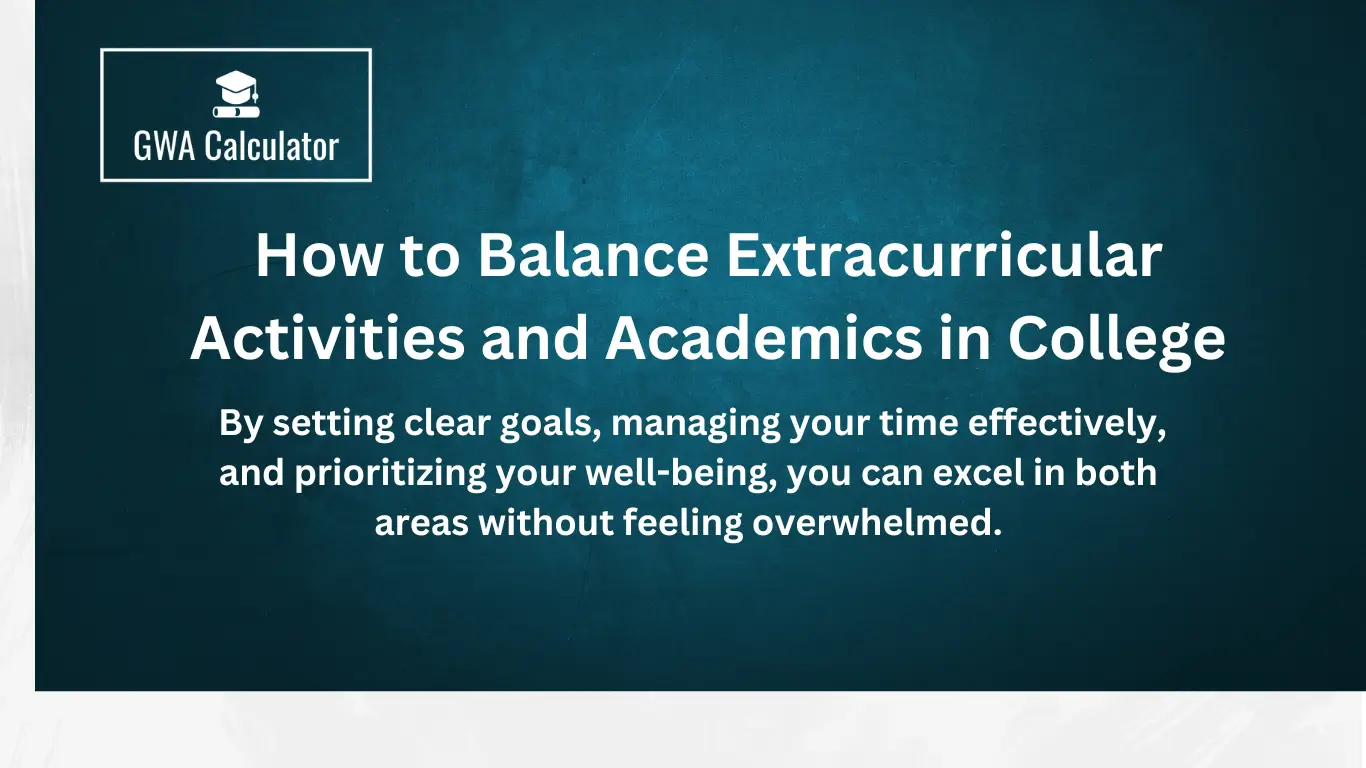How to Balance Extracurricular Activities and Academics in College
College is an exciting phase filled with opportunities to learn, grow, and prepare for the future. While academics form the foundation of your education, extracurricular activities play a pivotal role in personal development, networking, and building a well-rounded resume. However, balancing these two essential aspects of college life can be challenging.
In this guide, we’ll explore actionable strategies to help you effectively manage your time, prioritize tasks, and thrive in both academics and extracurricular pursuits.
Why Balancing Academics and Extracurricular Activities Matters
Striking the right balance between academics and extracurricular activities is crucial for several reasons:
- Holistic Development: Extracurriculars help build soft skills like teamwork, leadership, and communication, complementing academic knowledge.
- Time Management Skills: Learning to juggle multiple responsibilities prepares you for future challenges in your career and personal life.
- Enhanced Resume: Employers and graduate schools often seek candidates with diverse experiences beyond academics.
However, neglecting academics for extracurriculars—or vice versa—can lead to burnout or missed opportunities.
Step 1: Prioritize Your Goals
Set Academic and Extracurricular Goals
Start by identifying your primary objectives for both academics and extracurriculars.
- Academics: Aim for a target GPA or excel in key courses related to your major.
- Extracurriculars: Choose activities aligned with your interests and career goals, such as joining a student organization, sports team, or volunteering.
Determine Non-Negotiables
Rank your commitments based on importance and flexibility. For instance, attending mandatory classes and submitting assignments on time should take precedence.
Step 2: Create a Structured Schedule
Use a Planner or Digital Tools
Organize your tasks using tools like Google Calendar, Notion, or a physical planner. Include:
- Class schedules and assignment deadlines.
- Club meetings, practice sessions, or events.
- Study time and personal relaxation periods.
Adopt Time-Blocking Techniques
Divide your day into dedicated blocks for studying, extracurriculars, and downtime. For example:
- Morning: Attend classes and review notes.
- Afternoon: Participate in club meetings or sports.
- Evening: Study for exams or work on projects.
For time management read this article: What is the Pomodoro Technique and How Can It Benefit You?
Step 3: Choose Quality Over Quantity
Limit Your Commitments
Avoid overloading your schedule with too many activities. Instead, focus on 2-3 extracurriculars that genuinely interest you and align with your long-term goals.
Evaluate ROI (Return on Investment)
Assess how each activity contributes to your personal or professional growth. If an extracurricular drains your energy without offering value, consider stepping back.
Step 4: Stay Academically Focused
Establish Study Rituals
Consistency is key. Set aside specific times each day for studying. For instance:
- Use the Pomodoro technique to stay focused (25 minutes study, 5 minutes break).
- Review notes after every class to reinforce learning.
Utilize Campus Resources
Take advantage of tutoring services, writing centers, and study groups to excel academically without extra stress.
Step 5: Communicate and Collaborate
Work with Professors and Advisors
Inform your professors or academic advisors about your extracurricular commitments. They can provide flexibility or guidance when needed.
Collaborate with Team Members
In extracurriculars, share responsibilities and delegate tasks. Effective teamwork reduces the burden on individuals while enhancing productivity.
Step 6: Take Care of Your Well-Being
Prioritize Mental and Physical Health
- Sleep: Aim for at least 7-8 hours of sleep to maintain focus and energy.
- Exercise: Incorporate regular workouts to boost mood and stamina.
- Nutrition: Eat balanced meals to fuel your body and mind.
Practice Mindfulness
Engage in relaxation techniques like meditation or deep breathing to manage stress.
Common Challenges and How to Overcome Them
1. Overcommitment
Solution: Learn to say no. Politely decline additional responsibilities if your schedule is full.
2. Procrastination
Solution: Break tasks into smaller steps and set deadlines to avoid last-minute cramming.
3. Burnout
Solution: Schedule downtime and engage in activities that rejuvenate you, like hobbies or socializing with friends.
Practical Example: A Balanced Week Schedule
| Day | Morning | Afternoon | Evening |
|---|---|---|---|
| Monday | Attend classes | Study group meeting | Club activity |
| Tuesday | Review notes | Internship or part-time work | Prepare assignments |
| Wednesday | Gym or exercise | Volunteer work | Study for exams |
| Thursday | Research project | Sports practice | Relax and recharge |
| Friday | Lab or fieldwork | Club meeting or event | Socialize with friends |
Conclusion
Balancing academics and extracurricular activities in college is not only achievable but also essential for a fulfilling and successful college experience. By setting clear goals, managing your time effectively, and prioritizing your well-being, you can excel in both areas without feeling overwhelmed.
Remember, college is as much about discovering yourself as it is about academic achievements. Embrace the opportunities, stay organized, and enjoy the journey.
Start planning your balanced schedule today. Download a planner, list your priorities, and take the first step toward a well-rounded college experience!







